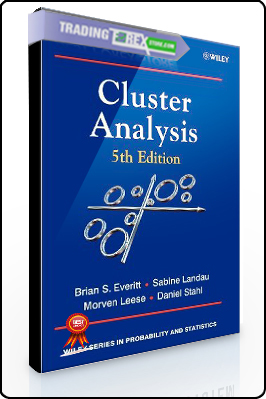Timothy Urdan – Statistics in Plain English
$15.00
Size: 2.5 MB
You Just Pay: $15
- Description
Description
Timothy Urdan – Statistics in Plain English (Third Edition )
This inexpensive paperback provides a brief, simple overview of statistics to help readers gain a better understanding of how statistics work and how to interpret them correctly. Each chapter describes a different statistical technique, ranging from basic concepts like central tendency and describing distributions to more advanced concepts such as t tests, regression, repeated measures ANOVA, and factor analysis. Each chapter begins with a short description of the statistic and when it should be used. This is followed by a more in-depth explanation of how the statistic works. Finally, each chapter ends with an example of the statistic in use, and a sample of how the results of analyses using the statistic might be written up for publication. A glossary of statistical terms and symbols is also included.
New features in the third edition include:
- a new chapter on Factor and Reliability Analysisespecially helpful to those who do and/or read survey research,
- new “Writing it Up” sections demonstrate how to write about and interpret statistics seen in books and journals,
- a website at http://www.psypress.com/statistics-in-plain-english with PowerPoint presentations, interactive problems (including an overview of the problem’s solution for Instructors) with an IBM SPSS dataset for practice, videos of the author demonstrating how to calculate and interpret most of the statistics in the book, links to useful websites, and an author blog,
- new section on understanding the distribution of data (ch. 1) to help readers understand how to use and interpret graphs,
- many more examples, tables, and charts to help students visualize key concepts.
Statistics in Plain English, Third Edition is an ideal supplement for statistics, research methods, and/or for courses that use statistics taught at the undergraduate or graduate level, or as a reference tool for anyone interested in refreshing their memory about key statistical concepts. The research examples are from psychology, education, and other social and behavioral sciences.
Review
“This book will be an excellent first choice for students or researchers ‘starting the journey into the realm of statistics’ but it will be also a great second choice for the many who have found this journey too intimidating the first time they tried it.” – Giorgio Bedogni, Liver Research Centre, Italy, in Journal of the Royal Statistical Society
“This book delivers on the promise of its title; it is the most clear and engaging communication of the basic principles of statistics that I have seen to date. It is a positive outlier that will greatly benefit teachers and students alike.” – Andrew J. Elliot, University of Rochester, USA
“Statistics in Plain English is a gift to students, teachers, and researchers. Urdan clearly explains statistical topics using straightforward, conversational language. The book is particularly unique because it covers everything from basic statistical principles to complex multivariate techniques, all in an extremely user-friendly manner.” – Eric M. Anderman, The Ohio State University, USA
“This approachable book provides an excellent introduction to statistical principles and terminology. Urdan clearly understands the bewildering experience of novices in the domain, and he smoothes the path with his clear prose and relevant examples.” – Avi Kaplan, Temple University, USA
“This is by far… the best statistical “primer” on the market today and I recommend it widely to students as well as colleagues…It is affordable and compact….[it] is appropriate for students at either the undergraduate or graduate level and it is generic enough…to be useful across a variety of disciplines… His manner of explaining concepts is far superior to most textbooks on the market.” – Catherine A. Roster, University of New Mexico, USA
“A well sequenced, well organized introduction to quantitative data analysis that does not rely on cookbook mathematics and equation-heavy presentations of statistical concepts, but instead focuses on conceptually oriented textual descriptions.” – Jenefer Husman, Arizona State University, USA
About the Author
Timothy C. Urdan is a Professor in the Department of Psychology at Santa Clara University. He received his Ph.D. in Education and Psychology from the University of Michigan in 1994 where he received several honors awards including the School of Education Merit Award, the Horace H. Rackham Predoctoral Fellowship, and the Burke Aaron Hinsdale Scholar in 1995. Since 2001, he has served on the editorial board for Contemporary Educational Psychology and the Journal of Educational Psychology. Dr. Urdan is the co-editor of two book series, one on Adolescence and Education and the other on Motivation and Achievement and of the forthcoming Educational Psychology Handbook.















